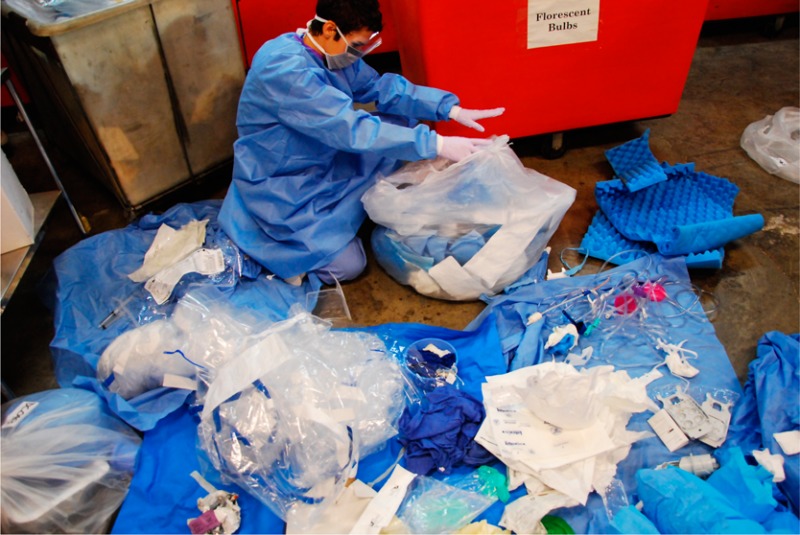- Record: found
- Abstract: found
- Article: not found
Environmental Impacts of Surgical Procedures: Life Cycle Assessment of Hysterectomy in the United States

Read this article at
Abstract

The healthcare sector is a driver of economic growth in the U.S., with spending on healthcare in 2012 reaching $2.8 trillion, or 17% of the U.S. gross domestic product, but it is also a significant source of emissions that adversely impact environmental and public health. The current state of the healthcare industry offers significant opportunities for environmental efficiency improvements, potentially leading to reductions in costs, resource use, and waste without compromising patient care. However, limited research exists that can provide quantitative, sustainable solutions. The operating room is the most resource-intensive area of a hospital, and surgery is therefore an important focal point to understand healthcare-related emissions. Hybrid life cycle assessment (LCA) was used to quantify environmental emissions from four different surgical approaches (abdominal, vaginal, laparoscopic, and robotic) used in the second most common major procedure for women in the U.S., the hysterectomy. Data were collected from 62 cases of hysterectomy. Life cycle assessment results show that major sources of environmental emissions include the production of disposable materials and single-use surgical devices, energy used for heating, ventilation, and air conditioning, and anesthetic gases. By scientifically evaluating emissions, the healthcare industry can strategically optimize its transition to a more sustainable system.
Related collections
Most cited references11
- Record: found
- Abstract: found
- Article: not found
Robotically assisted vs laparoscopic hysterectomy among women with benign gynecologic disease.
- Record: found
- Abstract: not found
- Article: not found
People, planet and profits: the case for greening operating rooms.
- Record: found
- Abstract: found
- Article: not found
